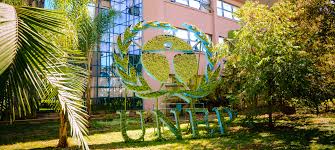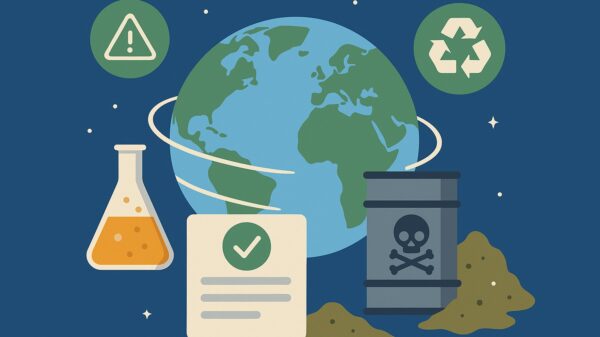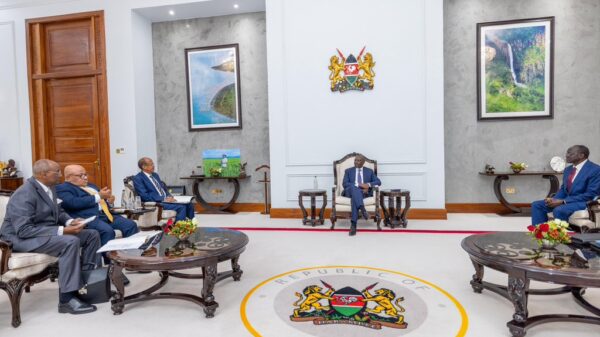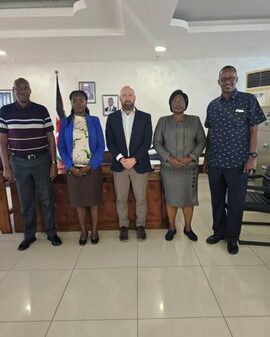NAIROBI, Kenya, Mar 19 – The United Nations Environmental Programme is now calling on the Ethiopian and Kenyan governments to approach the construction of the dams on River Omo with caution, saying it is a delicate matter that requires sufficient assessment of the environmental impact.
UNEP Executive Director Achim Steiner said on Friday that Kenya had the capacity to produce enough electricity to sustain its growing demand for power if it properly invested in the wind power farm in Turkana and that it did not need to rely on importing electricity from Ethiopia after the dams’ construction.
“I think dam building particularly when it involves trans-boundary river basins and water courses, then it is always a highly complex and sensitive subject. But I have certainly followed the public debate and I share the concerns that have not yet been adequately answered. It is essential that these impacts be looked at early,” he said noting that the construction of the dams would reduce the water levels in Lake Turkana which would subsequently be detrimental to the success of the wind farm.
UNEP’s Programme Officer for the Nairobi River Basin Project Henry Ndede also added that a reduction in the water levels of Lake Turkana would significantly affect the wind power project and reduce chances of promoting the economic capacity of the Turkana region. He also said that the L. Turkana ecosystem was a unique system and that human interference in how it managed itself would be detrimental to its existence.
“It is a lake which is longer than wide. The strength of the wind for the Turkana area is because of the geological formation of the Rift Valley; such that the Rift valley walls channel the currents. But this is facilitated by the fact that we have abundant water which creates a local situation of convectional currents and you have continuous winds that are very useful in turning the turbines,” he said.
He also added that the fact that L Turkana was lower in altitude compared to the Ethiopian highlands also facilitated the wind currents and that the wind power project, if successful, would generate more than 300 megawatts of electricity required in the country in line with the country’s long term national agenda.
“You’ll find that you have some kind of sinking of the air or wind currents which are also useful for turning the turbines. In Vision 2030 it will be a very significant output for the economic development of this country. It will constitute about 10 percent of the energy requirement in the next 10 years or so which is very important in the sense of renewable energy sources which we can harness,” he explained.
Mr Ndede who maintained that the decision whether to construct the dams on River Omo was a policy issue between the Ethiopian and Kenyan governments, said that it was advisable for the two countries to put into account the effects that the dams’ construction would have on the environment so that those consequences do not come back to haunt them.
He further explained that the cyclic nature of vapour and evaporation together with the different surface temperatures of the water played a significant role in enhancing or modifying the air currents that were moving over the lake.
“It means that if you have reduced waters this pattern and speed of the air currents will be interfered with so it is good to establish how much this will affect the generation of electricity from wind,” he said however adding that there was a possibility of the hydro and wind powers complementing each other in the long run.
The UNEP Programme Officer also noted that Kenya stood to have a lower economic advantage compared to Ethiopia after the construction of the dams. He added that there had so far been significant reductions of the water levels at L. Turkana as well as a recession of the vegetable cover on the flood plains of the River Omo and the Upper catchments of that region.
“The fact that the riparian areas have been encroached upon is a sign that people are looking for water to sustain themselves. So if a dam is constructed on the Ethiopian side there is a possibility that this will provide a good opportunity for livestock, increased agriculture as well as an opportunity for enhancing the livelihoods of people that are near the dam who are mainly Ethiopians.”
“The other side of the coin is that the reduced flow of the River Omo into L. Turkana will reduce the water levels in L. Turkana, change the water chemistry of the lake and affect the fishing activities of the Turkana which will in turn affect the social economic welfare of the people living around the lake. There is gain one side and a loss on the other,” he explained.
Meanwhile members of the Turkana community accused the government of sidelining them and ignoring the threat posed by River Omo’s damming. Save Lake Turkana Project Executive Director Lion Lepalo said the damming of the river which supplied 80 percent of its waters to Lake Turkana would create a myriad of problems for the community. He asked the government to stop the interference of the river’s water flow and conduct a comprehensive environmental impact assessment.
“People look at it like it has become a Lepalo issue. No; it is not my issue, it is not a Turkana issue, it is going to become a national issue. Because if a third of Kenya’s power can come from that location then Turkana matters. Something is not right here. We need answers. What is Kenya’s clarity of purpose here? There are better ways of sourcing for power,” he said.
The World Bank meanwhile clarified that it was not funding the projects which are mainly Chinese funded. After the collapse of the second dam’s wall (Giibe II) plans to construct Giibe III were halted as focus shifted into repairing the collapsed wall.


































